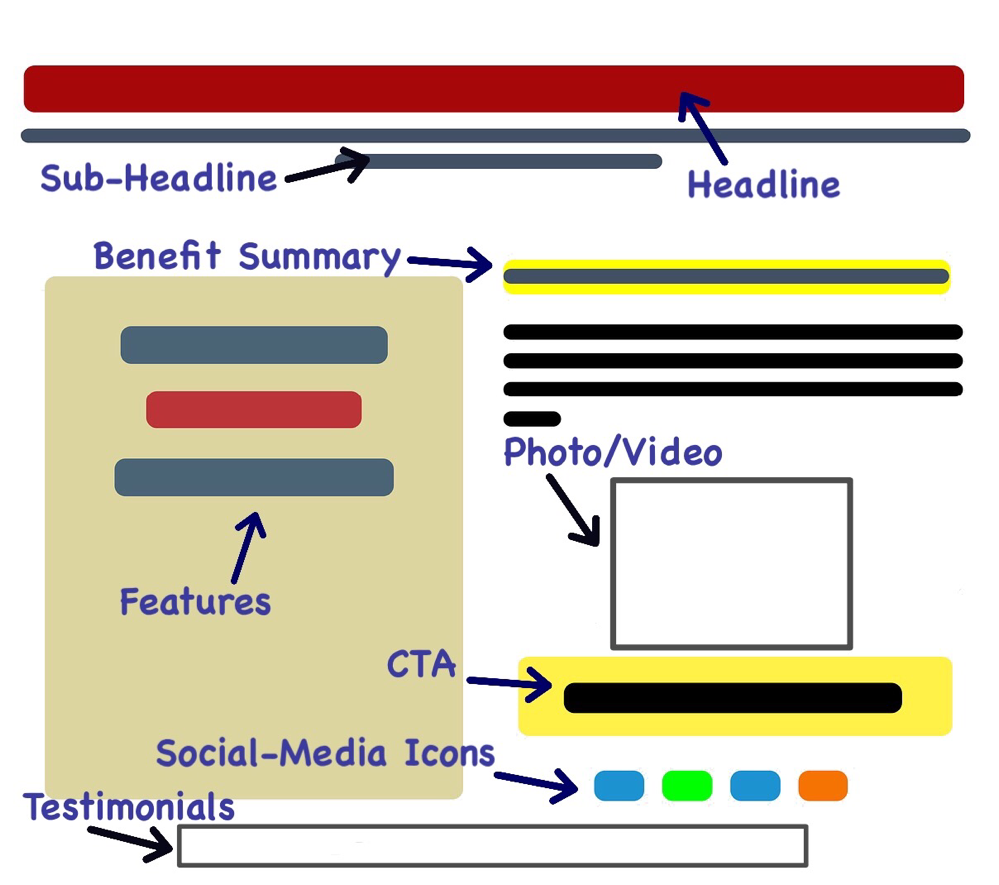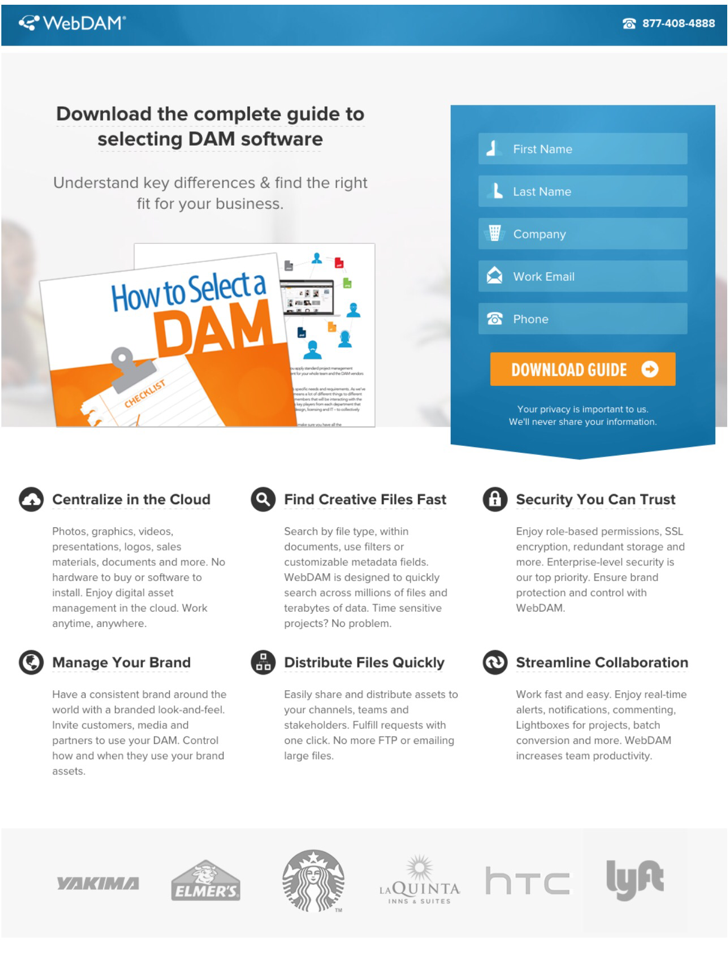Creating High-Converting PPC Landing Page

Imagine you search something on Google. You get a top result matching exactly with what you are searching for. As you click the link, you realise that you have ‘landed’ a page totally irrelevant to your search. You feel fooled by the ad copy that was so seducing that you could not help but click it. You will immediately close the tab and would never like to come back to such a ‘pretentious’ and ‘deceptive’ website.
The same thing can happen to your customers if you do not provide them exactly the same thing in your website (or landing page) that you have promised for in your ad copy in Google search.
Thus, audience research, competitive analysis, and efforts for creating a compelling ad are just the initial steps of the marketing campaign. Even though you have been able to secure an enviable position for your ad in Google and also, have been able to create a copy that attracts; it is not guaranteed that your visitors will convert. The only thing to make sure that your visitor converts into an actual customer is by providing him exactly what he is looking for.
In short, a PPC campaign is a waste if a ‘relevant’ and ‘compelling’ landing page is not made.
So, to save you from the nightmare of not getting your landing page right and losing visitors as they peep inside your (online) store to find something not as captivating as to stay, we tell you how to get the landing page right.
11 weirdly specific ways to target the RIGHT audience with FB Ads https://t.co/r5yTdm56SM #socialmediamarketing #ppc pic.twitter.com/lsc4nPHRcR
— Robert Rider (@MakingMoneyFast) March 13, 2017
Here are 3 main pointers you need to take care of while designing your landing page:
- Deliver what you Promise
You open a new store in a posh, crowded area in the city. You name it ‘Watch Arena’. People would like to come in and check out a few ‘watches’ but, to their surprise, find a range of security and CCTV cameras. Your tagline says ‘Keep a watch even you are away.’ What do you think will happen? You will drive your visitors away. And, in fact, people actually searching for security and surveillance systems will never find you. All in all, you never get customers.
To avoid this situation in the PPC world, make sure that your ad copy corresponds to what you sell and your landing page content delivers it. Here is a good example for this:

The above paid ad copy promises the Google user that he can find ‘latest watches’, ‘low prices’, ‘top trends’, ‘huge selection’, ‘free delivery’, and more. Let’s see whether it’s landing page delivers that or not:

With watches showcased along with their prices, free delivery promise being delivered, and an easy men/women search made east, we would say that this landing page is pretty good.
- Include Essential Elements
Your aim is to come up with such a landing page whose content and design are convincing enough to make your visitors become your customers. For such an attractive landing page, make sure to add the following elements:
- Headline
Headline is the one that will attract your visitor and will make him understand what the page is about. Make sure that it is a hard-hitting one. It should be clear, short (less than 15 words), precise, and generate interest.
- Sub-headline
Sub-headline gives you a chance to make the visitor understand better. The interest that has been once provoked in the headline should continue in the sub-headline. It can be more detailed than the headline but should always be precise.
- Benefit Summary
If you think you can provide more interesting and useful content to the reader, you can add benefit summary to your page, as well. Make sure it is benefit-oriented for your audiences.
- Features
Features include enumerating benefits that your visitor can enjoy while using your product or service. Make value propositions that are clearly customer-oriented. Speak more in lesser words.
- Photos and Videos
Just because a picture is worth a thousand words and a video is worth even more, adding a photo or video in your landing page is a good idea. But, not just any other photo or video. Add something that is directly relevant to your product (the product itself) or your service (the value it derives). Make sure your media is of high resolution, clear, and attractive.
- CTA
CTA (Call to Action) button is the one that will make your visitor take action. It will either make him directly your customer or will help him understand your features better. You can have multiple CTA buttons in one landing page, after every discrete section of the page.
- Social Icons
Having social-media icons on your landing page can make it easier for your visitors to share your page within their network, if they like what it see. Moreover, you should also put a ticker along with social-media icons stating how many people have liked/shared your page. Higher the number, more the credibility of your page.
- Testimonials
Testimonials are a good way to earn the trust of your customers. Tell them that real humans have used and liked your product or services earlier. Along with testimonials, you can also mention any crucial social media mentions, case studies, or media coverage your brand has got.
Attract Visitors Through The Creation of Valuable #Content [Infographic]#ContentMarketing #SEO #SocialMedia #Marketing #SMM #PPC #Blogging pic.twitter.com/Ql9XXmIVxu
— ipfconline (@ipfconline1) March 14, 2017
- Follow a Logical Flow
Purpose of landing page is to attract and inform the visitor so that he can take a particular action. With this pursuit in mind, a landing page should be clutter-free, simple, and clear. Photo, video, and content are essential factors of a landing page and must be hard-hitting and effective, without being superimposing and diverting.
Along with the elements, their placement is really essential. A visitor who comes on your landing page would like to cognitively engage with it. Start with a headline and sub-headline to create the interest. Go on to summarize features and benefit summary to tell more about what positive change(s) the product or service can bring into the visitor’s life. A photo and video should state the same benefit(s) in a visual manner. A CTA should follow thereafter to let the visitor take quick action. Testimonials and social-media icons will add to the credibility of your brand.
Here is an example of an effective landing page, with most elements placed effectively and strategically to allow easy flow of the eye:

Conclusion
Congratulations! You have now created an effective ad copy and an equally convincing and relevant landing page, studied your business, competitors, and target audiences and are all set to launch your successful PPC campaign.
It is now time to implement a properly targeted PPC campaign. In the next and last step of this series, learn how to launch a new Google Adwords paid-search campaign.
Ash Ganda



